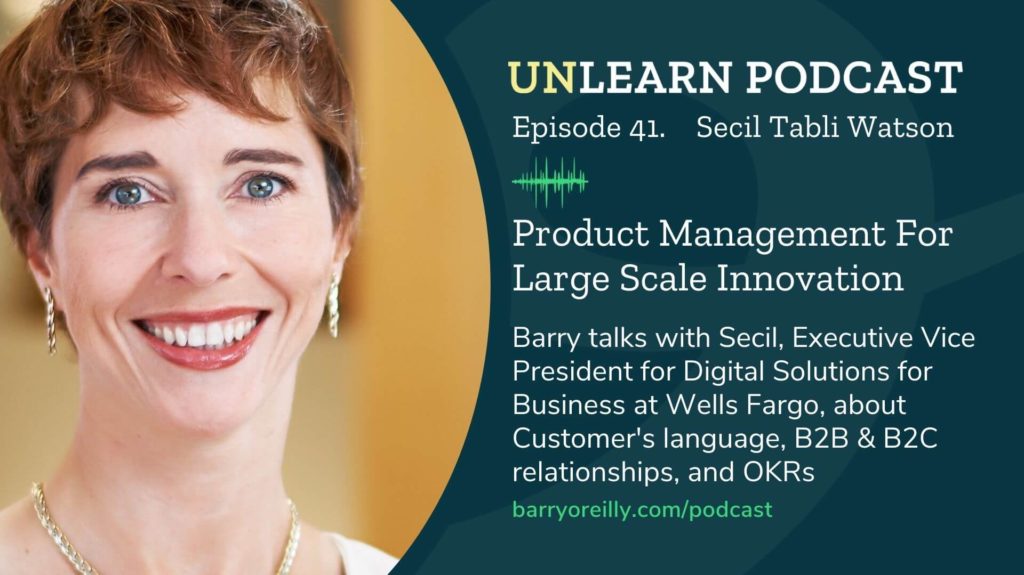Barry O’Reilly is pleased to welcome Secil Tabli Watson, Executive Vice President for Digital Solutions for Business at Wells Fargo. In this week’s show, Barry chats with Secil about the techniques she uses to drive innovation in both retail and business banking environments. She shares the lessons she unlearned in the process and how to bring product management principles into a large organization in a way that drives innovation.
First Lesson: Speak The Customer’s Language
Secil’s first assignment as a digital channel manager 18 years ago was to make Wellsfargo.com into a buying site. She focused on language that was customer-focused, rather than the bank-centric. “We brought in the capabilities and the competency of doing user research and understanding customer tasks and understanding their behaviors and motivators and really putting that into the language,” she says. In addition, they transformed the architecture of the website so that it was more customer driven. [Listen from 1:55]
Related client story
Learn more about the lessons we learned in this show in this case study


Staff People to Outcomes Not Products
If you’re struggling to move from project-based teams to outcome-based ones, Secil advises that you reframe how you think. This was a critical unlearning for her, she remarks. She shares an example of how she recast her thinking about a project from product to outcome, as a result of which her team was able to see themselves as responsible for a broader outcome, and partner with other departments to make it happen. She advises listeners to break the project into phases with quick wins, and gives insight into how to create cross-functional teams with as little awkwardness as possible. “If you ask a little bit at a time from people, they’re more willing to help,” she points out. [Listen from 6:50]
B2B Customer Relationships Are Deeper
Businesses with B2B customers can develop deeper relationships with them. Because their B2B customers are fewer in number, Secil says, they are able to communicate on a more intimate level over a longer period of time. She asks her B2B customers, “How do you feel?” because it elicits deeper answers. “And I’m also then able to ask the question, Why?” Secil remarks. “I can ask the question as many times as I want to try to get down to a deeper meaning and a deeper need or a desire or a business problem that the customer may be having.” She and Barry discuss why co-creating with your customers – as counterintuitive as the idea appears – is their favored approach. “It builds more trust and actually derisks more of your relationship,” Barry comments. [Listen from 15:20]
It Only Takes 10
“…it doesn’t take more than 10 people to do things but you have to get the right 10 people,” Secil argues. Her job, as she sees it, is to figure out what to do differently so she can identify those 10 people quickly in her large organization environment. Barry comments that if more companies adopt this approach they would see greater success. [Listen from 29:35]
OKRs are not for Compensation
Secil and Barry agree that while measuring performance is important, performance metrics should not be tied to compensation, as pay for performance inhibits innovation. Secil believes that the team should win together and learn together; they should not compete against one another. “There is nothing more we could do to make a better team other than enable them to learn,” she says. [Listen from 36:00]
Looking Ahead
Secil is excited about the current trend to apply product management principles and skills in atypical areas, such as for thinking through outcomes and tactics for diversity and inclusion efforts. Barry comments, “I think everybody can take these principles and methods and apply them to build better experiences for people.” [Listen from 43:35]
Don’t want to miss a post? Sign up for my podcast newsletter and monthly newsletter!















